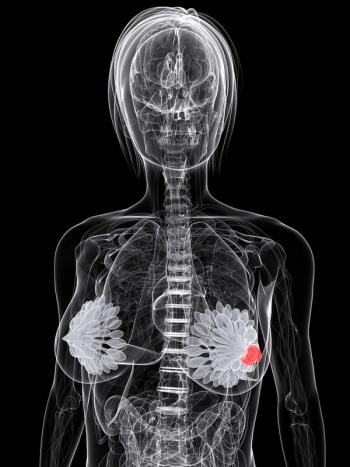
Oncology NEWS International
- Oncology NEWS International Vol 10 No 7
- Volume 10
- Issue 7
Large Prostates Can Undergo Brachytherapy
BOSTON-Men who have large prostate glands may have slightly more urinary symptoms after brachytherapy than men with smaller prostates, but this should not deter such men from having the treatment, Nelson N. Stone, MD, said at a poster session of the 42nd Annual Meeting of the American Society for Therapeutic Radiology and Oncology (ASTRO).
BOSTONMen who have large prostate glands may have slightly more urinary symptoms after brachytherapy than men with smaller prostates, but this should not deter such men from having the treatment, Nelson N. Stone, MD, said at a poster session of the 42nd Annual Meeting of the American Society for Therapeutic Radiology and Oncology (ASTRO).
Dr. Stone and Richard G. Stock, MD, of Mount Sinai School of Medicine, New York, reviewed the outcomes of 242 men with T1-T2 prostate cancer who were implanted with seeds containing I-125.
The patients ranged in age from 43 to 83 (median, 67). Prior to treatment and every 6 months afterward, the patients recorded urinary symptoms, using a scale of 0 to 5, with 5 being most severe. They also assessed quality of life on a scale of 0 to 6. Follow-up was 18 to 180 months (median, 32).
Men with prostate glands of 50 cc or larger reported that they strained more to void than men with smaller prostate glands (P = .04). "A possible explanation is that larger glands on average received higher doses of radiation than smaller glands," Dr. Stone said.
He stressed that the overall differences in long-term urinary or quality-of-life complaints were not substantial. "Patients with small or large prostates should be considered good candidates for permanent prostate brachytherapy," Dr. Stone said.
The only other significant differences between pretreatment and post-treatment scores were a slight increase in intermittency in the patients with the smallest prostates (less than 25 cc in volume) and an increase in urgency in those with moderate size prostates (25 cc to 50 cc), the researchers reported.
Articles in this issue
over 24 years ago
NCI to Expand Its Support for Trials of STI-571over 24 years ago
Patients and Physicians Differ on Chemotherapy Expectationsover 24 years ago
Concurrent Chemoradiotherapy Helps Preserve Larynxover 24 years ago
FDA Issues New Safeguards for Children in Clinical Trialsover 24 years ago
Leukemia Society Offers Patient Information on Use of STI-571Newsletter
Stay up to date on recent advances in the multidisciplinary approach to cancer.
















































































